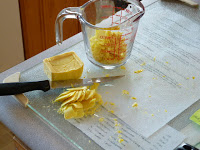Being Frugal = Being Cheap! This attitude is pure BS. We was fed this notion during the affluent years immediately following World War II by advertisers who simply wanted to make a buck. While I can’t begrudge them for wanting to earn a living I can tell you that each one of us who bought into the idea that we simply must have the latest make and model of everything from cars to electronics are creating more hardship for the rest of us. This artificial ‘need’ drives product prices up and allows manufacturers to handout latest updates in piecemeal fashion in such a way that they make the most money from the consumer. You need only look at how Apple releases small ‘improvements’ to their latest product and then a few months later releases a newer more improved version when they could have released all of the latest techs at one time. It’s become the American way.
Now that I’ve had a chance to stand on my soap box, I’ll get to the point of this post.
Many of our parents and/or grandparents went through many financial hardships due to our nations involvement in World War II. They learned how to be frugal, to save a buck by reusing items for other purposes and to simply get the most out of everything they owned. Most of us seem to have lost the drive to practice this same frugality due to the abundance we have been fortunate enough to experience. Those days of abundance are slipping into our past and we must learn how to stretch our dollars much the same way our parents and grandparents learned.
Frugality is a label that far too many people associate with being poor. But many others - and the number is growing – see the wisdom of being frugal, not just for the sake of saving money, but also for the sake of saving our planet. What we can learn from this group of non-conforming, trend-bucking, advertisement-rejecting, maoney-saving heroes is we can live without stuffing our landfills with items with still-useable life left in them.
There are many great tips for saving money and our limited resources:
Saving paper and the trees it comes from
Save paper and ridding us of the temptation to spend by getting rid of unwanted catalogs – and hopefully eventually scale back the US Postal Service.
Send an e-mail to optout@abacus-us.com with your name and mailing information. Abacus is the database used by nearly all product catalogs.
Create a free account at
catalogchoice.org, and choose the catalogs that you'd like to unsubscribe from. They'll take care of all the details, so you don't have to.
Stop unsolicited credit card offers:
Go to
optoutprescreen.com, and follow the instructions on the website to opt-out of "firm" offers. These are the credit card offers that come marked as "pre-approved."
Saving Water and the cost of using it and cleaning it
We flush a lot of water and money down our toilets. The easiest and of course more expensive way to control this loss is by replacing your old standard toilet bowl - uses up to 7 gallons per flush – with a low-flow toilet – 1.6 gallons per flush. Pennies and gallons do add up quickly.
Other, less expensive methods are:
1. Install an adjustable flapper.
You can save up to three gallons of water per flush by replacing your current flapper with an adjustable flapper. Find them at any hardware store or home improvement store.
2. Install a tank bag.
Purchase a tank bag; fill it with water, and hang it in your toilet tank. It'll displace some of the water, thereby reducing the amount of water needed to refill the tank after each flush.
3. Install a fill cycle diverter
The toilet tank and bowl may fill at the same time, but they don't fill at the same rate, (the bowl fills faster) and since the fill valve doesn't shut off until the tank is full, this means that water continues to be fed to the bowl. So, where does this extra water go? Straight down the drain! Install a fill cycle diverter, a small piece that connects to the fill line and overflow tube, and that water will be diverted back to the tank where it can be put to use.
4. Check for leaks
Most home improvement stores will offer a free leak detection tablet to drop into your tank so that you can find a leak. This is a great way to pinpoint what needs to be repaired or replaced.
Replace disposable products with reusable products
One-time use products are very wasteful. Here are some that will help save money, time and the environment:
- Reusable water bottles
- Cloth diapers
- Refillable cooking oil sprayer
- Refillable ink pens
- Safety razor or an electric razor
- Homemade dryer sheets
- Cloth napkins
- Wash cloths or rags
- Food storage containers
- Reusable sandwich bags
I’m sure that if you look around your home you will find many other ways to save a few pennies here and there. Also, while grocery shopping, take a look at the packaging and see if maybe that coffee can or butter container or cool whip tub just might have an additional use or two,
We can make it if we try.






















